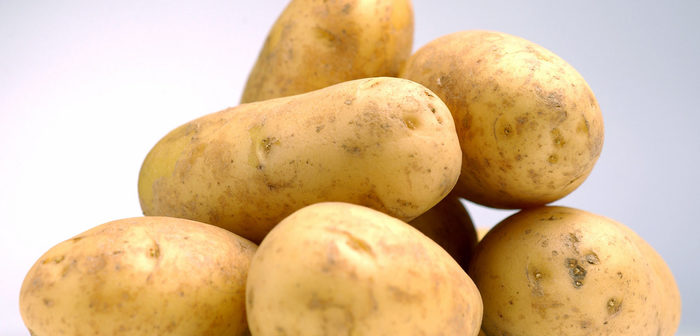Crop scientists have confirmed another tool for the armoury to control plant diseases whose pathogens can mirror the evolution of antibiotic resistant bacteria in humans.
Combining methods of disease control rather than relying on a single resistance strategy can extend the durability of crops by many years, confirms computer modelling that draws on classical population genetics theory.
The finding comes from assessing the spread and virulence of the pathogen responsible for late blight of potato, Phytophthora infestans. The pathogen, which caused the Great Irish Famine in the mid-nineteenth century and led to the new science of plant pathology, evolved into a serious threat again in the UK in 2011.
Potatoes are world’s fourth major crop after wheat, rice and corn. In the UK, potatoes are second only to wheat in national economic importance, and emergence of the pathogen’s increased virulence in 2011 prompted funding for the latest research, which is reported today in Proceedings of the Royal Society B.
Fungicides and resistant cultivars were the chosen disease control methods, as these are most commonly and easily applied, says Kevin Carolan, a pathogen evolution modeller at Rothamsted Research, which led the project with Fera Science, Scotland’s Rural College and ADAS.
“Pathogens such as blight evolve virulence, thwarting the resistance genes bred into the potato,” says Carolan. “We have shown that appropriate use of fungicides can slow this evolution, so the resistance genes are more durable, preventing loss of disease control.”
“Some farmers already use more than one method to contain disease within their crops; they may use cultivars with one or more resistance genes but still apply fungicides for peace of mind,” notes Carolan. “Our research provides evidence for such an approach, and for similar approaches using a combination of other methods, and indicates how the timing and degree of dosing, for instance, will affect resistance to disease.”
He adds: “We’ve shown that certain doses of fungicide will accelerate the evolution of virulence in the pathogen, making the problem worse, and other doses will slow the evolution of the pathogen protecting genetic resistance in the cultivars.”
Many growers apply a dose to control the pathogen for only that season, says Carolan: “Our finding will help agronomists and advisory boards to develop a toolkit for designing the best dose to apply to a given cultivar, such as Cara or King Edward, that will not only provide immediate containment of the pathogen but also slow its evolution, so controlling the disease for generations to come.”
Carolan stresses that the finding represents a general technique to maintain the effectiveness of cultivar resistance. Combining other methods of disease control could also reduce the growth rate of epidemics; methods such as biological control organisms, changes to soil fertilisation levels or agronomic measures, including planting date, planting density and intercropping.
Futhermore, says Carolan, “we chose a model of the evolution of P. infestans but the principle could be applied to many different crops and pathogens. In fact, in principle, it would be applicable to the evolution of drug resistance in the medical fields.”
The researchers see their finding as an additional general method to delay the evolution of virulence, which supplements three widely advocated techniques and is easier for growers to apply. Current techniques include using mixtures of resistant cultivars, deploying genetic resistance differentially in time and location, and designing cultivars with multiple resistance genes; all these methods involve practical disadvantages.
The paper’s core thesis derives from classical population genetics theory: “Selection for virulence can be slowed by introducing additional disease control methods, slowing the growth rate of the entire pathogen population.”




